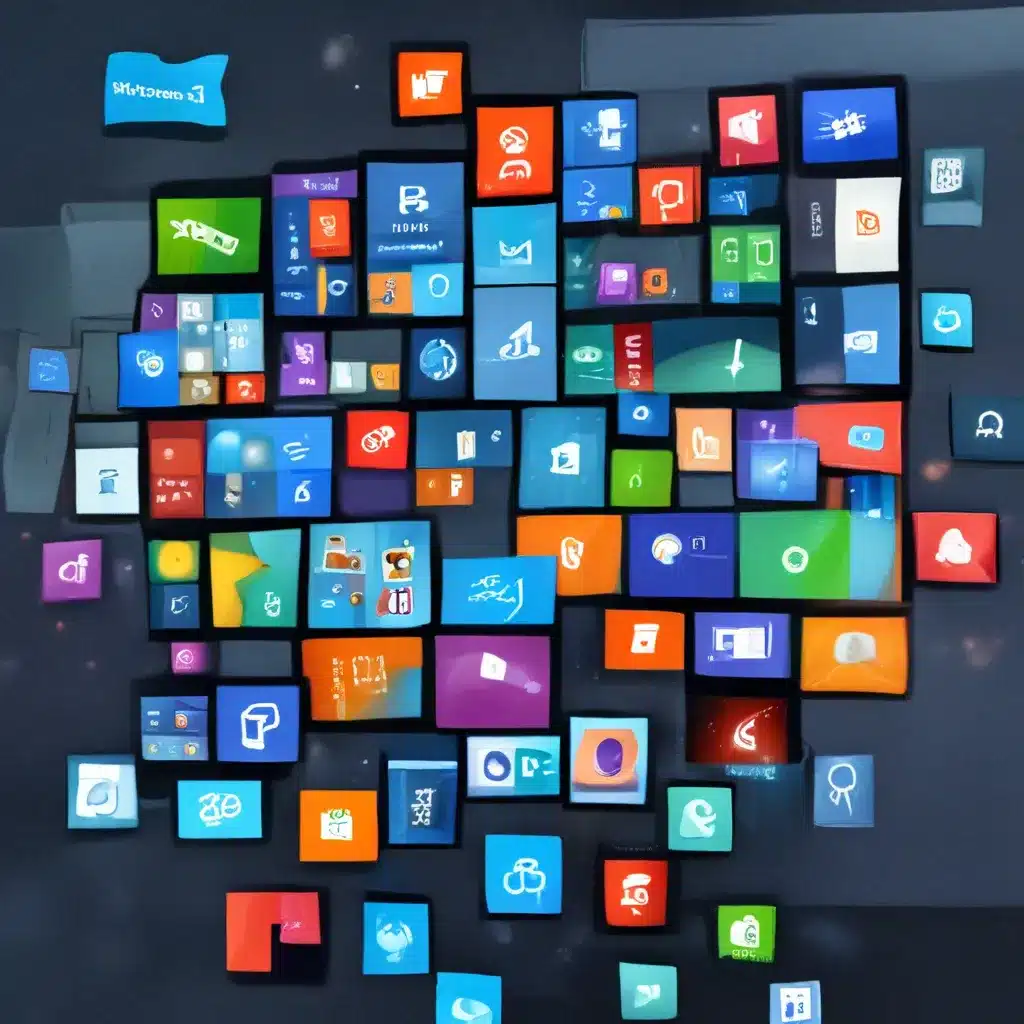Unleashing the Power of Android Apps on Windows 11
As a self-proclaimed tech enthusiast, I’ve always been fascinated by the ever-evolving world of operating systems and the ways in which they can enhance our digital experiences. When Microsoft announced the arrival of Windows 11 and its integration with Android apps, I couldn’t help but feel a surge of excitement. The prospect of seamlessly blending the familiarity of Windows with the vast ecosystem of Android apps was simply too enticing to ignore.
Exploring the Android App Integration
One of the standout features of Windows 11 is its ability to run a wide range of Android apps directly on your desktop. This integration is made possible through the Amazon Appstore, which serves as a gateway to a curated selection of Android apps that have been optimized for the Windows 11 environment. From productivity tools to entertainment apps, the possibilities are endless.
As I delved deeper into this integration, I was pleasantly surprised by the level of polish and attention to detail. The Android apps I tried felt right at home on my Windows 11 device, with smooth transitions, responsive controls, and a level of integration that made it hard to believe they weren’t native to the operating system. The ability to pin Android app shortcuts to my taskbar or start menu was a particularly useful feature, allowing me to access my favorite apps with just a click.
Unlocking New Levels of Productivity
One of the key advantages I’ve experienced with the Windows 11 and Android app integration is the boost in productivity. As an IT professional, I often find myself juggling multiple tasks and applications throughout the day. With the ability to seamlessly switch between Windows and Android apps, I’ve been able to streamline my workflow and increase my efficiency.
For instance, I can now use my favorite note-taking app, Microsoft OneNote, alongside powerful Android productivity tools like Trello and Asana. This seamless integration has allowed me to streamline my task management, collaboration, and note-taking, all while maintaining the familiar Windows interface I’ve grown accustomed to.
Moreover, the ability to run Android apps on my Windows 11 device has opened up a world of new possibilities. As someone who frequently travels for work, I can now access my favorite mobile banking app or travel planning tools directly from my laptop, without the need to switch between devices. This level of convenience has been a game-changer, allowing me to stay productive and connected no matter where I am.
Bridging the Gap Between Platforms
One of the most intriguing aspects of the Windows 11 and Android app integration is the way it bridges the gap between these two distinct platforms. As an IT professional, I’ve often encountered scenarios where users require access to specific Android apps, but are limited by the confines of their Windows-based devices.
With the new integration, these limitations have been effectively removed. I’ve been able to assist users in seamlessly accessing their Android apps directly on their Windows 11 devices, without the need for cumbersome workarounds or third-party emulators.
This convergence of platforms has not only improved productivity but has also fostered a more cohesive and inclusive digital ecosystem. Users who prefer the familiarity of Windows can now enjoy the vast selection of Android apps, while those who have traditionally relied on Android can now leverage the power and stability of the Windows operating system.
Tackling Potential Challenges
Of course, with any new integration, there are bound to be some challenges and limitations to consider. As I’ve explored the Windows 11 and Android app experience, I’ve encountered a few areas where the integration could be further refined.
For instance, the selection of Android apps available through the Amazon Appstore is not as extensive as the Google Play Store, which many users have grown accustomed to. While the curated collection is certainly impressive, the lack of access to certain popular apps can be a point of frustration for some.
Additionally, the performance and compatibility of Android apps on Windows 11 can vary, depending on the app and the hardware specifications of the device. I’ve noticed that some Android apps may not run as smoothly or offer the same level of integration as their native Windows counterparts, which can be a minor inconvenience.
Embracing the Future of Computing
Despite these minor challenges, I firmly believe that the integration of Android apps with Windows 11 represents a significant step forward in the evolution of personal computing. By bridging the gap between these two dominant platforms, Microsoft has opened up a world of new possibilities for users, empowering them to seamlessly access the apps and tools they need, regardless of their preferred operating system.
As an IT professional, I’m excited to see how this integration will continue to evolve and how it will shape the future of computing. I envision a world where the lines between desktop and mobile experiences become increasingly blurred, where users can effortlessly transition between tasks and apps, unencumbered by the limitations of traditional platform boundaries.
And for IT services companies like itFix, this integration presents new opportunities to better serve our clients. By leveraging the power of Windows 11 and Android app integration, we can offer our customers even more comprehensive and tailored solutions, empowering them to unlock their full potential in the digital landscape.
In conclusion, the integration of Android apps with Windows 11 is a remarkable feat of technological convergence, one that has the potential to redefine the way we interact with our digital devices. As an IT professional, I’m thrilled to be a part of this journey, and I eagerly anticipate the exciting possibilities that lie ahead.













